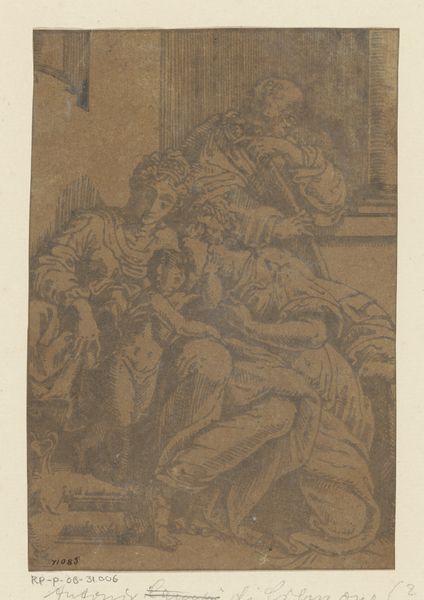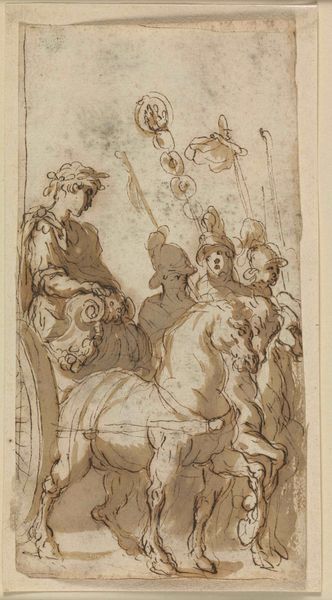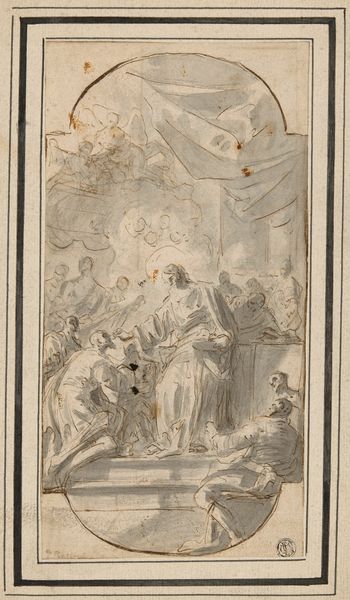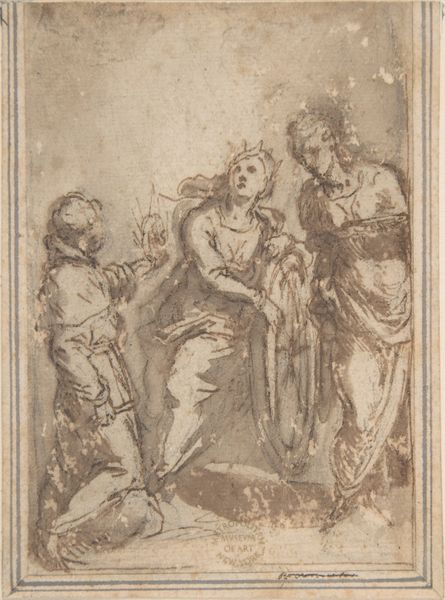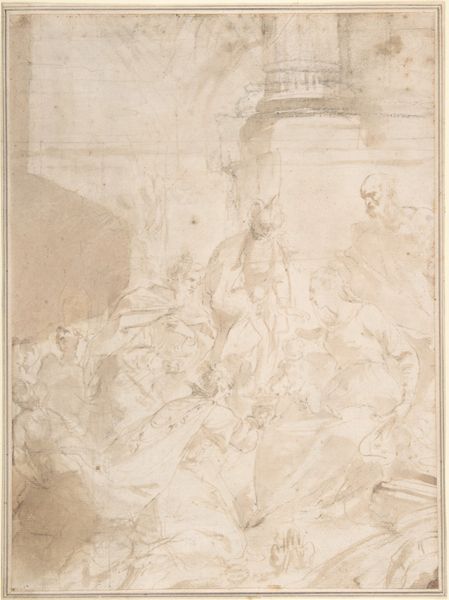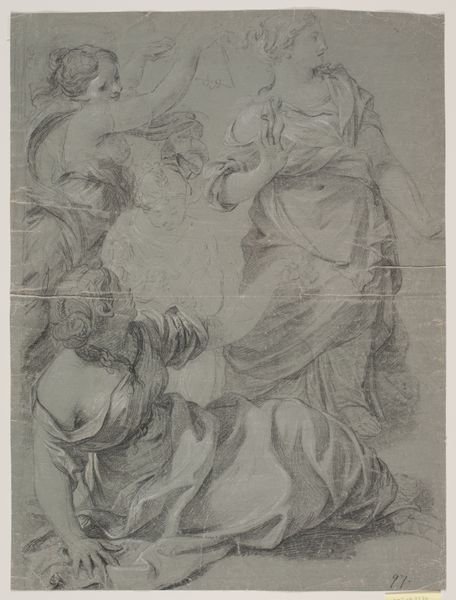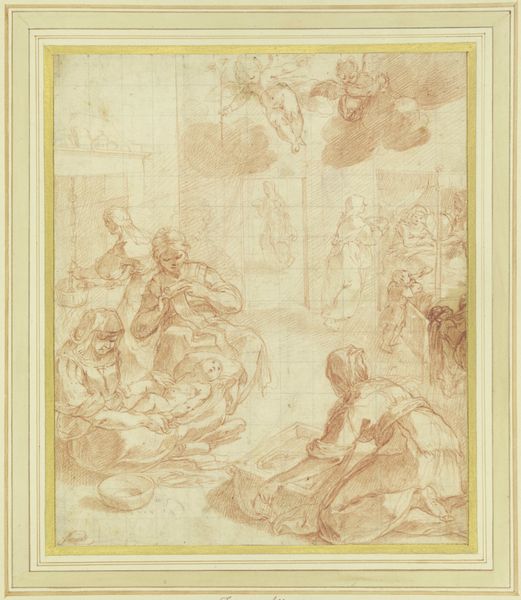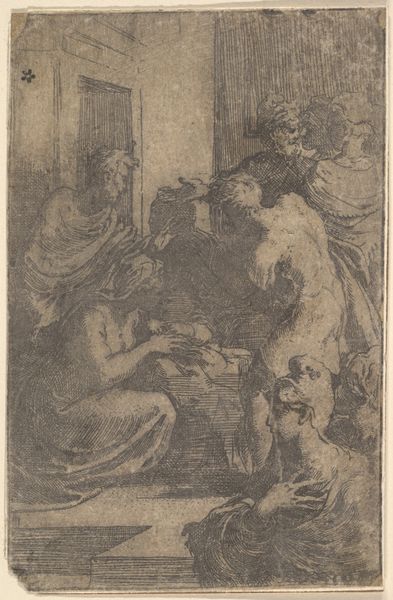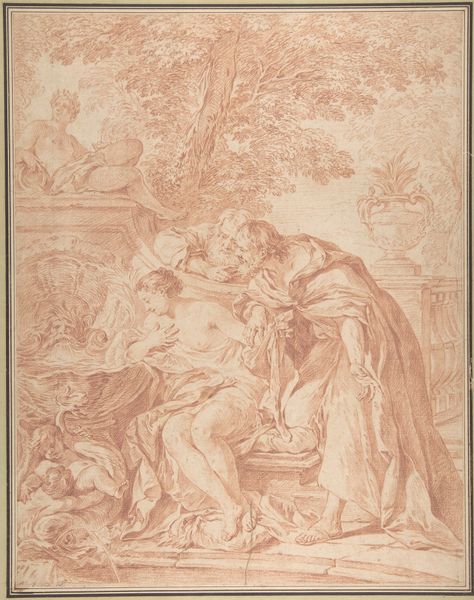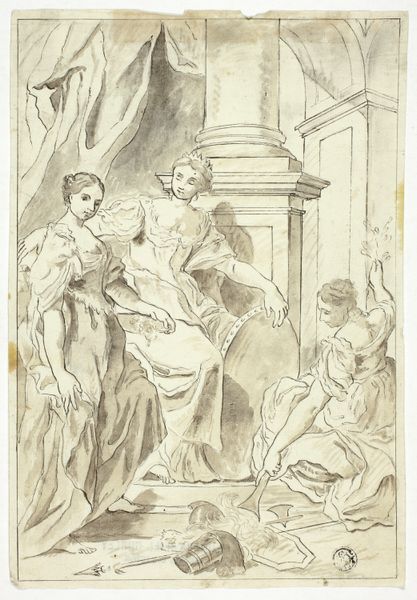
drawing, print, dry-media, pencil, pen, charcoal
#
drawing
#
narrative-art
# print
#
dry-media
#
pencil drawing
#
coloured pencil
#
pencil
#
pen
#
watercolour illustration
#
charcoal
#
academic-art
Dimensions: 9-7/16 x 7-1/16 in. (24 x 18 cm)
Copyright: Public Domain
Editor: So this is "Scene with Woman and Child, and Beggar," made sometime between 1600 and 1700 by an anonymous artist. It's a drawing done in pencil, pen and charcoal and you find it here at the Met. I’m really struck by the rough, almost unfinished quality. What catches your eye in this piece? Curator: The rough quality speaks volumes, doesn't it? To me, the drawing's power lies in its representation of universal themes – motherhood, poverty, compassion. Notice how the figures are arranged, almost like a tableau. There's a visual echo of biblical scenes, particularly the Flight into Egypt. Editor: Oh, I see what you mean about the biblical connection! What about the beggar figure, what does his inclusion signify? Curator: The beggar, with his staff and humble posture, serves as a potent symbol. He is perhaps a reminder of human suffering, the ever-present shadow of need, and, dare I say, a challenge to the viewer's own sense of empathy. Think about the history of charity and almsgiving in this period, how that might shape our understanding. Editor: That makes perfect sense. So the image is both of its time, and also timeless, because those struggles still resonate today. Curator: Precisely. The anonymous artist has tapped into archetypes, these symbolic characters and relationships that transcend centuries. Don't you think the very lack of finish amplifies the raw emotional impact? The drawing doesn’t present a perfect, polished ideal, but a glimpse of unvarnished reality. Editor: It does. Thinking about those archetypes, it makes the emotional core feel a lot more universal, doesn’t it? Curator: Indeed. It's a testament to the power of simple lines to convey profound and enduring themes. It really opens up the complexities that link us to the past.
Comments
No comments
Be the first to comment and join the conversation on the ultimate creative platform.
